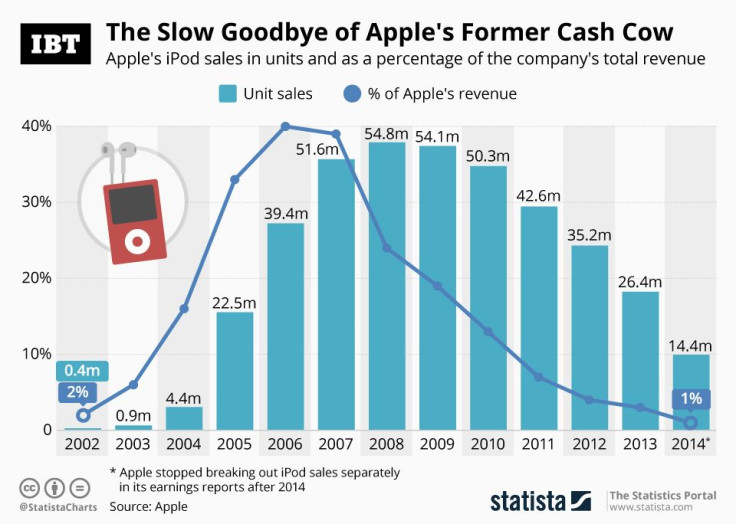Infographic: Apple iPod's Contribution To The Company's Revenue Since 2002

Four years after its last refresh, Apple announced an updated version of the iPod touch on Tuesday. The new iPod, the seventh generation touch, looks exactly like its predecessor but comes with updated internals, most importantly the A10 Fusion chip best known from the iPhone 7 and 7 Plus. While the new processor will deliver a significant performance boost to the cheapest iOS device, fans hoping for a more significant update will be disappointed. Still equipped with the same cameras and the same screen as the 2015 version and still lacking Touch or Face ID, it seems like Apple has given the new iPod touch just enough to support the upcoming iOS 13 but nothing more.
The iPod touch has been the last remaining product in Apple’s iPod lineup ever since the company discontinued the iPod Shuffle and iPod Nano in 2017. When the first iPod was released in the fall of 2001, it rang in the age of digital music and quickly became Apple’s cash cow. As our chart illustrates, the iPod accounted for as much as 40 percent of the company’s revenue in 2006, just before the iPhone was released. With the growing popularity of smartphones, however, MP3 players were gradually pushed towards obsolescence and iPod sales started declining in 2009.
In 2014, the last year Apple broke down iPod sales as a separate category, the company sold 14.4 million iPods, down from nearly 55 million units in 2008. That year (2014), the iPod accounted for just 1.25 percent of Apple’s revenue, explaining why the company had no problem pulling the plug on two of the last three remaining model





















